Ko Olina has long been known for its resorts, including the Disney Aulani, which opened in 2011. The master community boasts three natural and four artificial lagoons with white sand beaches, four resorts, a golf course, shopping centers, and a residential community. When its first resort opened in 1993, it seemed like an odd location 17 miles from Waikiki on West Oahu.
The opening of the Disney property marked a dramatic shift. The addition of the Four Seasons almost a decade ago, initially the Ihilani Resort & Spa, further cemented the area as a high-end destination, drawing visitors who craved a luxury resort-focused Hawaii vacation away from Waikiki.
Here comes Atlantis’ $2 billion resort.
Ko Olina is poised for another significant transformation with a new $2 billion Atlantis Resort on the horizon. Atlantis, known for its iconic resorts in the Bahamas and Dubai, will bring 500 rooms and 500 condos to Ko Olina. The project’s proposed retail spaces, aquariums, and expansive pools are expected to attract a mix of families and luxury travelers, further boosting the area’s global appeal.
Ko Olina and the Leeward coast beaches, once primarily visited by residents and local families, have also seen a surge in popularity among visitors. The area’s fast-expanding dining and shopping options add to its allure, making it increasingly possible for travelers to skip Waikiki altogether. We didn’t think this change would happen, but it has.
The concept of an Atlantis resort at Ko Olina isn’t new.
In 2016, China Oceanwide announced plans to develop a luxury Atlantis property on Oahu’s west side in partnership with Kerzner International. However, the project was abandoned in 2024 as the developer faced liquidation issues. The land, once planned for this ambitious project, was later acquired by New Age Ko Olina in early 2025, reigniting hopes for an iconic Atlantis resort in Hawaii.
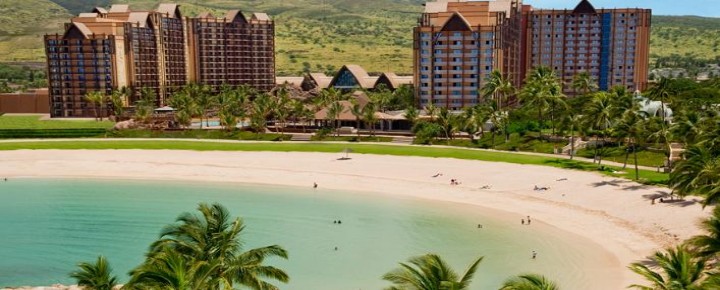

Challenges to Ko Olina’s growth.
While Ko Olina’s evolution offers an undeniable fresh appeal to legacy Waikiki, it also highlights significant challenges. The area remains isolated from the rest of Oahu, and the less-than-iconic drive along the H-1 freeway is notorious for traffic bottlenecks, especially during peak hours. Visitors staying in Ko Olina may avoid trips to Waikiki or Honolulu altogether due to the inconvenience.
The Honolulu rail project envisioned as a solution for traffic begins and ends in nearby Kapolei. However, its utility for tourists remains questionable. The lack of a direct rail connection to Ko Olina and the area’s reliance on private vehicles continue to leave its infrastructure strained. These factors could limit its appeal to visitors who value easy access to Oahu’s major attractions.
Another potential issue is sustainability. As tourism development accelerates, questions about preserving the natural beauty of the West Oahu beaches come to the forefront. Overcrowding and overuse could threaten the qualities that make the area special, echoing concerns already facing Waikiki.
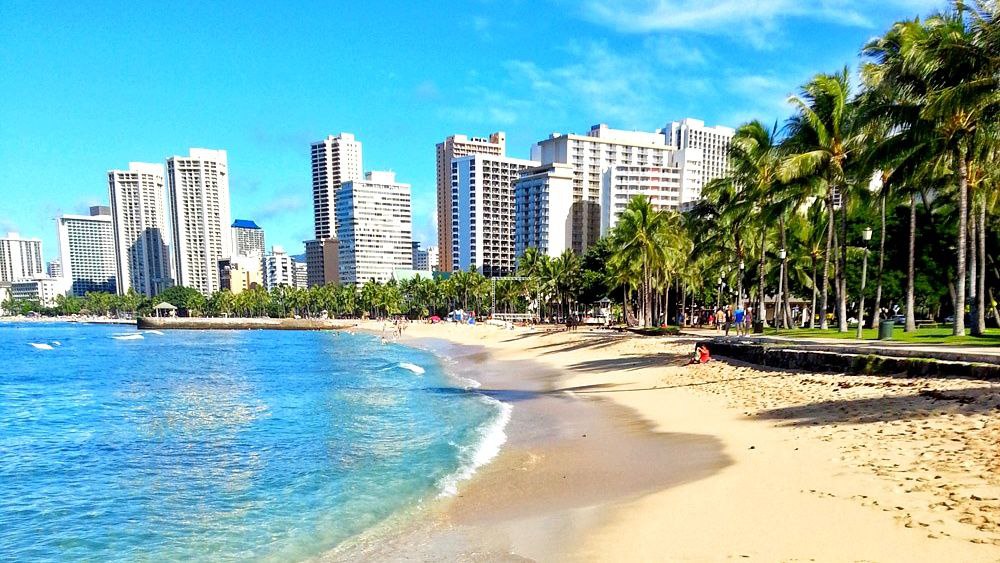

Ko Olina vs. Waikiki: A new kind of tourism.
Waikiki has long been synonymous with Hawaii tourism. Its high-energy environment, iconic beaches, and well-regarded and endless dining and shopping options make it the go-to destination for first-time visitors. In contrast, Ko Olina offers a curated, resort-focused experience. Travelers staying in Ko Olina can enjoy the idyllic lagoons, nearby beaches, high-end accommodations, and, for now, a quieter pace—perfect for those seeking Hawaiian beach relaxation over Waikiki’s urban vibrancy.
This distinction raises an important question: Will Ko Olina draw tourists away from Waikiki, or will its appeal be to an entirely different market? Families and luxury travelers may find Ko Olina’s self-contained environment preferable, while those seeking access to Oahu’s diversity and nightlife will likely remain loyal to Waikiki.
Ko Olina’s history includes royalty.
This was a sacred space used by both Hawaiian chiefs and Hawaiian royalty. They came to relax and bathe in the waters and coves and used this area for fishing and religious ceremonies. In the late 1800s, James Campbell purchased 41,000 acres, including Ko Olina, and used it for sugar cane production. Then, in the 1930s, his daughter, Alice Kamokilaikawai Campbell, moved here to a place she called Lanikuhonua, which means “where heaven meets earth.” Lanikuhonua is now a cultural center that hosts hula events, weddings, and more.
What this means for Oahu’s future.
Ko Olina’s rapid development reflects larger trends in Hawaii tourism: the push toward high-end accommodations and more self-contained resort experiences. This shift could redefine how Hawaii positions itself in the global travel market. Yet, this also underscores the need for sustainable planning to address infrastructure challenges and ensure that the area’s natural beauty and the well-being of its residents aren’t compromised.
For West Oahu residents, the influx of visitors to Ko Olina raises concerns about yet more traffic, accessibility to west-side beaches, and the long-term impact on the surrounding community. Balancing development with local needs will be key to the area’s success.
As Atlantis joins Ko Olina’s luxury resort portfolio, it’s clear that a once-quiet west-side escape that was somewhat of an adventure is evolving into a destination experience that could, in its own way, rival iconic Waikiki. The question is whether it can achieve this while maintaining its unique identity and addressing the challenges of such rapid growth.
What are your thoughts on Ko Olina’s evolution? Share your perspective in the comments below.
Lead Photo Credit – Beat of Hawaii at Lanikuhonual, Ko Olina.
Get Breaking Hawaii Travel News


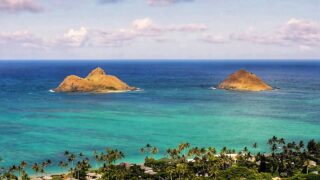
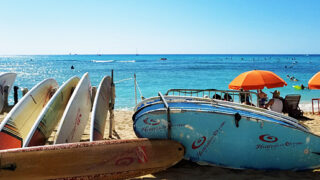
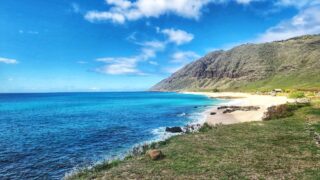
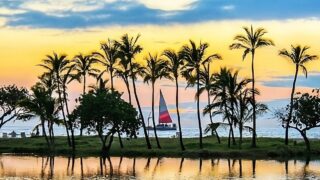
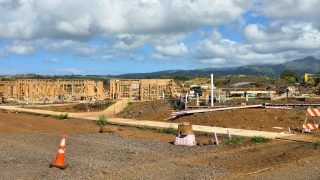
So much for controlled tourism growth. As a tourist, the messaging from the State is confusing. They want to reduce the number of visitors, they want to have responsible tourism. They want an economy not so reliant on tourism. Atlantis is the opposite and will take resources from residents.
Just doesn’t make sense.
When I went to Ko Olina few years back eating out had Very Few Options. That’s the only draw back. Waikiki has so many options, but who wants
to see hookers on your way to dinner
Out of those few dining options, only Four Seasons stands out. If you’re a real foodie, everything else is mediocre at best, not to mention it’s overpriced. Ko Olina could’ve been and should’ve been an extension of a vibrant Honolulu dining scene, but they’ve completely degraded it by poor selection of food businesses.
As a long-time resident of Makakilo, which is just a bit east of Ko Olina, I can attest that it is much farther than just 17 miles from there to Waikiki. Plug it into Google Maps, and you’ll see it’s actually 27.5 miles.
But from Waikiki to Ko Olina, it’s about 90 miles after 4pm Mon-Fri.
I am up here too. Not looking forward to the extra traffic.
I’ve been coming to the Ko O’lina are since 1986 when I met my future husband at Paradise Cove Luau. Nothing was out there. So we’ve seen it change everything starting since.
This is Horrendous. 1,000 more room to this area? That’s potentially 500 more cars to add in to the infrastructure.
Please, no.
Won’t happen. Hawaii government has a strong paternalistic stripe as well as several monied interests lobbying to keep it out of the islands.
Hmmm…
Nobody mentioned the word ‘casino’
Yet…….
Instead of doubling down on tourism, why not use land vacated by agriculture to diversify Hawai’i’s economy using it’s location close to Asian economies as a plus.
Singapore, also with land limitations, could be used as a template.
As a resident of Kapolei, where Ko Olina technically is, I think this is a very bad idea. We don’t need it or want it.
What we Do need is more non-chain restaurants and, dare I dream for, a normal bar like what you might find on the mainland. Something nice for us locals so we don’t have to go to Chilis for a draft beer.
Or a mom and pop pizza joint. Not too much to ask – just tired of the chains.
Because, c’mon man. Ugh.
if you think there is demand, open one up! There are a couple of what appear to be local restaurants in that mall near Chili’s!
Since my family has been coming to Ko Olina since 2000, I find this news disheartening. Very sad for us. We’ve seen the area go from a quiet getaway perfect for a jumping off point to the rest of Oahu to a bustling destination and with Atlantis coming I’m sure if we’re able to visit Ko Olina this year it will surely be our last time. It drives home how those who came before us must have felt about all the development. It brings to mind the quote by John Muir…”We are rich in proportion to the things we can afford to leave alone”. 😭
I’ll believe it when I see it. Oahu can’t reliably fill the hotels it has now.
I totally agree not all land needs to be developed. The island needs to worry about its own sustainably and not put extra strain on the infrastructure. Putting $ ahead of the lives of the families that call the island home.
Just returned from Ko Olina. I have been traveling to Ohau for the last 20 years. I have seen the changes to Waikiki. Now, I prefer Ko Olina area and save Waikiki for a day trip. Waikiki is too crowded for me now, and it is a metropolis. Maui is still my preferred island in that area.
Started staying in KoOlina when the JW Marriott Ihilani (now the Four Seasons) was the only hotel, besides condos. Almost too quiet and no restaurants nearby. I recall it was quite controversial when the Disney Aulani was built next door – how did that work out? Obviously okay because visitors love that property and it’s regularly booked. This sounds like a massive project with triple the rooms, so hopefully the infrastructure and restaurants will be added to accommodate the growth as it they have over the past 20 years. Kind of excited to see Atlantis here in the US.
Ko’Olina is dead to us – bought a condo there on the 11th green in 2002 when I was airline based at HNL and we loved it – beautiful, relaxing, and the hotel/beach staff were absolutely the best in the Pacific, I M O – treated us like locals.
But then, I do go back in “The Territory” and the ’50s. Most of the employees thought I was Samoan as I got very dark in about 1 hour in the sun. Must be the influence of my Sioux and Aussie Aborigine ancestors running through my veins along with the white Euros, yes ?
At times, the Farrington Hwy and inbound traffic was “heavy”, but overall the wait and parking anywhere in Ko’Olina was nothing to sweat …
Then came Disney (?) and a couple of others and the gates were opened to anyone who wanted in to use the facilities – it destroyed the tropic “ambiance” and hi-end $$$ investment in the retirement “home” we paid beaucoup bucks for and that we planned.
Wish I still had Dad’s Kailua ’50s beach house.
I’ll believe it when I see it. It’s been one mirage after another.
Atlantis…..questions arise about full landfill,water shortage, more hideous traffic jams…and why anyone thinks this is a good idea.
I live off Exit 2 on the H1. Traffic is bad during peak hours. Adding thousands of people to the flow of traffic, plus all the new housing off Exit 3, is going to make the drive to/from work amazingly more painful. And with only one of the two Ko’olina entrances open, traffic to get off for Ko’olina is bad enough, this will exacerbate things.
They either need connect Wainae with the H2 via a tunnel of some sorts or make the H1 larger. Neither of these things will happen. And the train has little to nothing to alleviate traffic so I surmise it will not help with increased Ko’olina traffic unless they run the train to Ko’olina.
I’m sorry “West Side Beaches”?? I remember in the 1990s having locals ask “why would you go out there, it’s nothing but rocks”. Now the developer has turned that rocky coast into beautiful sand covered “lagoons” and now they worry about “accessibility to west-side beaches”
We’re homeowners at the Beach Villas at Ko Olina. Our very uncrowded lagoon (lagoon two, Honu Lagoon), will unfortunately be filled up with a lot more people in 5-years.
Currently, our lagoon is much less crowded than the lagoon that fronts the Disney Aulani (lagoon one) and the Marriott (lagoon three).
The lots on both side of us are undeveloped. Work on the Atlantis should have already been completed. Now when construction starts, the plan is that they will be building simultaneously on both sides of us. The other side will be a high end hotel such as the Waldorf or Ritz Carlton. The owners also own the Waldorf (previously the Mandarin Oriental) in Las Begas along with another high end hotel in California.
One the rail station opens at the HNL airport, it will be an inexpensive Uber ride from Kapolei to Ko Olina. Much less so than the cost of an Uber ride from the airport to Ko Olina currently. Of course, most people rent a vehicle to explore the Island.
It’s such a shame what they will do to Ko Olina. What makes the area special now are the open spaces and some uncrowded beaches. Once the Aulani opened and put dozens upon dozens of beach chairs on the beach it stopped feeling calm and special. It’s the same with Lagoon 3, crowding. Too bad the same fate is slated for Lagoon 2. No worry, soon gonna be just as crowded as Waikiki.
Yes, I’m counting the days until lagoon two becomes overcrowded like lagoon one. Not looking forward to that. I remember back when I was a kid before the Ihilani, now Four Seasons (originally the New Otani) was built. Rural and peaceful. The lagoons are beautiful, created by dynamiting out the lava rocks. Can you imagine, that wouldn’t fly in this day and age. Then beach sand imported from Molokai. So we’re like Disneyland in that it’s all an illusion, albeit a beautiful one.
Atlantis will be the end of Ko Olina. Overcrowding on the beaches and the facilities will forever destroy the peace of the resort. Not to mention the already unbearable westbound traffic jams during the peak hours. Ko Olina, especially once fully built, will need a different road access from the current one. Will Atlantis owner or the Ko Olina resort owner help with that? Highly unlikely.
As for the project itself, it’s an atrocity and exercise in poor taste, completely out of place and nothing even close to the spirit of Hawai’i. Its design is one is the ugliest to ever happen on any island in the state. The new owner should’ve started from scratch and redesigned the whole ugly monster, but it would’ve cost too much and take much longer. The design rules should’ve been outlined by the owner of the resort, but they don’t care, so any developer can do pretty much whatever they want. As always, money talks.
Eventually, I believe that the road in Kapolei that ends at the Target shopping center will be extended to Ko Olina. Then they would probably open the second guard gate as well. It’s not as nice right now to go to Target or Costco during rush hour. Hopefully that will improve.
Also excited to see the day when the rail station at the airport opens. Then it will be an easy train ride to Kapolei and then an uber home to Ko Olina. Would have been nice if the rail extended to Ko Olina but that would bring in even more people, so there’s that. (I think Disney know a thing or two about monorails?)
The rail should have extended to the mall, ideally next to the Hawaiian Railway Society spur, they makes trips through Ko Olina. That would have made it a fun way to arrive!
I’ve always stayed at Aulani with my family and absolutely Love the tranquility of Koolina. I’m not a fan of Waikiki its too crowded and feel its not relaxing in my personal opinion, so I would hate for Koolina to turn into another Waikiki.